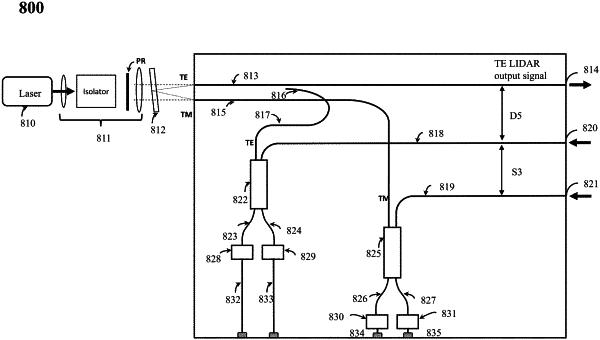| CPC G01S 17/32 (2013.01) [G01S 7/481 (2013.01); G01S 7/4817 (2013.01); G01S 7/499 (2013.01); G02B 6/12004 (2013.01); G02B 6/2773 (2013.01); G02B 6/2813 (2013.01); G02F 1/0136 (2013.01)] | 10 Claims |

|
1. An electro-optical system for polarization separation, the system comprising:
a laser configured to generate an output signal;
a polarization rotator configured to:
receive the output signal;
generate a transverse electric (TE) signal associated with the output signal; and
generate a transverse magnetic (TM) signal associated with the output signal;
a first birefringent crystal configured to:
receive the TE signal and the TM signal associated with the output signal; transmit the TE signal at a first angle of refraction; and
transmit the TM signal at a second angle of refraction;
a second birefringent crystal configured to:
receive at least one input signal; and
generate, based on the at least one input signal, a first polarized portion and a second polarized portion of the at least one input signal; and
a photonic integrated circuit (PIC) configured to:
receive, from the first birefringent crystal, the TE signal associated with the output signal;
receive, from the first birefringent crystal, the TM signal associated with the output signal;
receive, from the second birefringent crystal and via a first input waveguide, the TE
portion of the at least one input signal; and
receive, from the second birefringent crystal and via a second input waveguide, the TM portion of the at least one input signal.
|